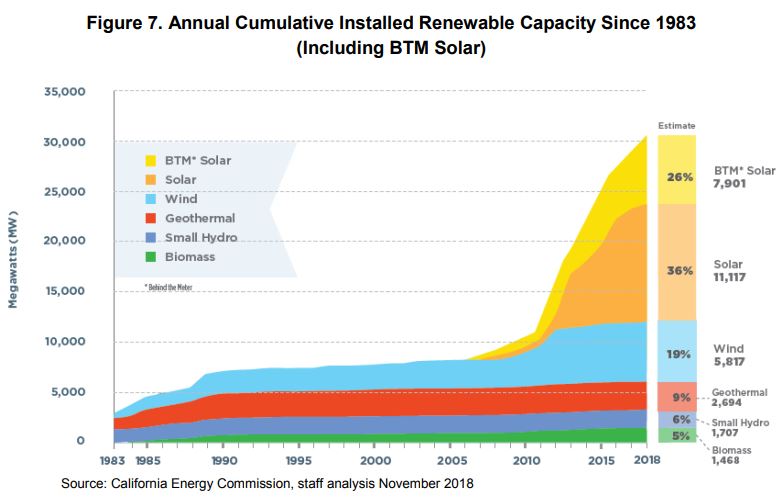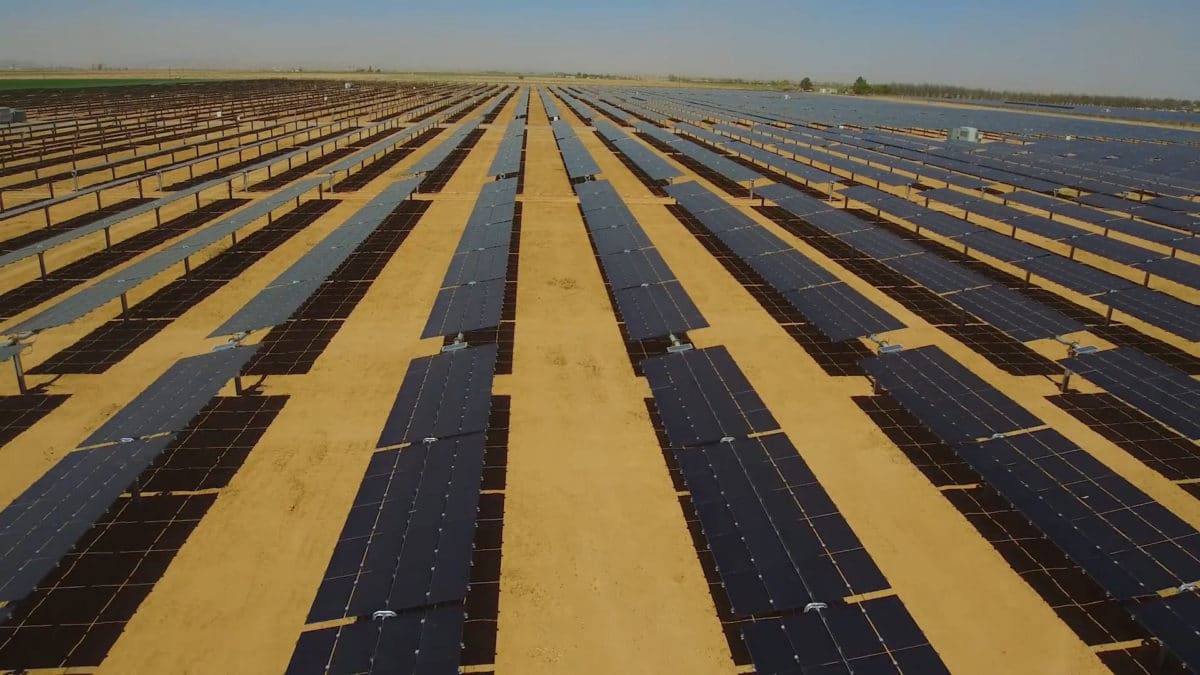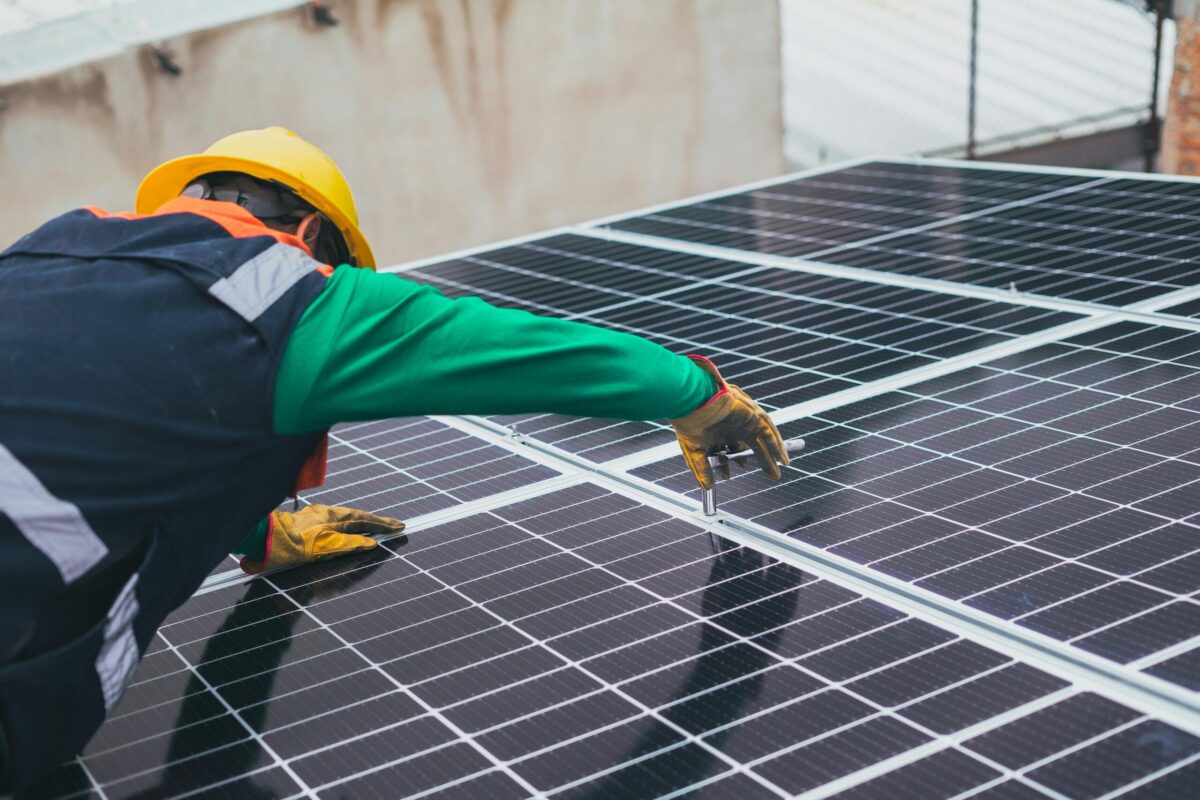The superlatives describing California’s mass run long; the world’s 5th largest economy with 40 million people is a powerful one. The state’s economic strength, coupled with it being a world leader in clean energy is the greatest piece of evidence that we can first have our cake, and eat some of it too. A clean solar-powered cake.

The California Energy Commission estimates that 34% of the state’s retail electricity sales (pdf) in 2018 were provided by renewable energy sources eligible for its renewable portfolio standard (RPS), as shown in the above image. This definition notably excludes the state’s large hydroelectric plants.
The report notes that in 2018, solar represented the largest portion of renewable generation serving California’s electricity load, at almost 12% of all electricity. Broadly, in the past five years large-scale solar generation has increased nearly five-fold, while behind-the-meter solar resources increased approximately 310%. As well, the state expects it will soon achieve the goal of 1 million solar roofs, with an estimated 958,000 solar systems installed.

Though the most recent numbers are for the end of 2017, the report noted that the majority, but not all, electric retail sellers were in compliance with the 33% goal, and that some – for instance San Diego Gas & Electricity at more than 44% – were way out ahead and pulling a few along.
The report notes some moments of system stress that have occurred with these aggressive generation shifts:
- For one minute on May 26, 2018, an average of 73.9% of load on the California Independent System Operator (California ISO) grid was served by RPS resources.
- California ISO experienced a new instantaneous solar generation record on June 29, 2018, when solar capacity peaked at 10,739 megawatts.
- The total load and the total load less wind and solar on June 29, 2018, when renewables served a peak load of 13,570 MW.
- On June 29, 2018, the largest hourly curtailment occurred in between 7 A.M. and 8 A.M. with 12 MWh curtailed, and the total generation curtailed on that date was 32 MWh.

A total of 19 GWac of solar power has been installed in the state, including behind the meter capacity. In total, the state had installed 30.8 GW of renewable capacity by December 31, 2018.
The state’s next major milestone is hitting 44% of its retail electricity being from renewables by 2024. The state has a goal of 100% CO2 free electricity by 2045.
Of interest, large hydroelectric facilities, generally defined as 30 MW or larger, with some exceptions, are not eligible for the RPS in California, therefore generation from large hydroelectric facilities is not included in this calculation. The report notes that in 2017, large hydroelectric represented nearly 15% of California’s electricity generation.
This content is protected by copyright and may not be reused. If you want to cooperate with us and would like to reuse some of our content, please contact: editors@pv-magazine.com.








I’m presuming the BTM Solar does not count Off-grid installations. So this number is higher.
You’ll never know how many installed off grid solar because they’re off grid by nature and don’t have to submit application to grid connection.
Yes, but it’s still power generated and used in state. By that logic, if half the BTM Solar were to go off grid tomorrow, it would look like the renewable share shrank, and Fossil Fuels’ share going up. Of course we would know what happened to that solar. So we should start adding in off grid solar. There’s some third party surveys around. Also, there’s even SolarCoin, a crypto token for solar produced. At least some off grid data is likely captured there.
Interesting article, thx.
I think you might have a typo. 12MWh curtailed in one hour? Big woof, that’s in the noise. You must mean a bigger figure…
I am in Chicago and put a solar roof on my house. I mowed the lawn on a sunny day so no storage or cost ( 6 cents) for a power line delivering a kilowatt. It is the cost of the power line that is so costly.